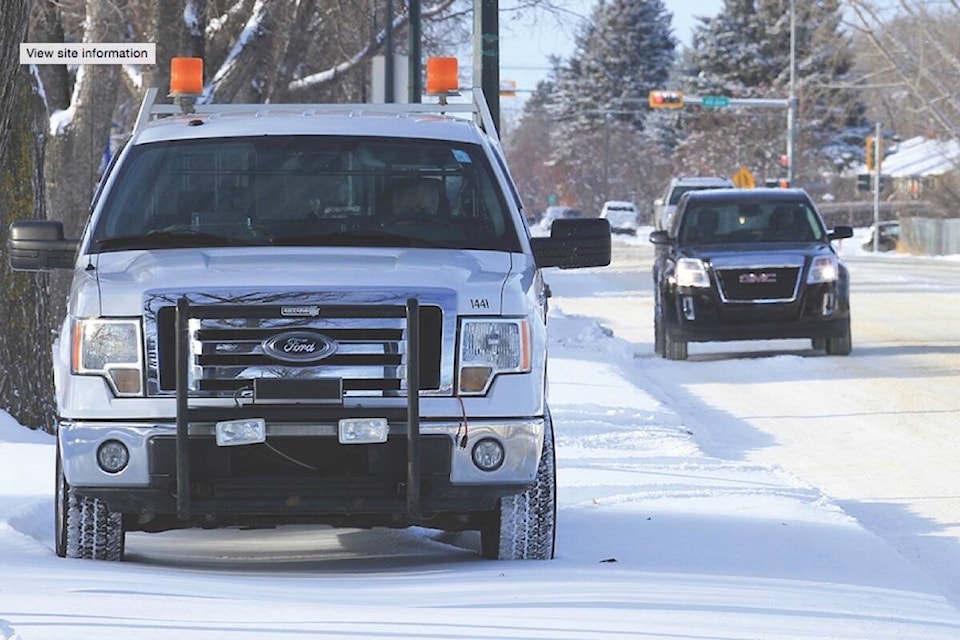Red Deer may have to cut back on photo radar locations because of a provincial response to criticism the cameras are “cash cows.”
Last week, Alberta Transportation announced new rules will be rolled out in April aimed at deterring photo radar “fishing holes” or speed traps.
“Photo radar should only be used for traffic safety — not as a cash cow to squeeze extra money out of Albertans,” said Justice Minister Kaycee Madu in a statement at the time.
Topping the new four guiding principles for automated traffic enforcement laid out by the province is that transportation safety, not revenue generation, must be the objective.
Among the changes coming will be restrictions on using photo radar in transition zones and on residential roads with speed limits less than 50 km/h, not including playground and school zones. Double-ticketing drivers within five minutes will also be eliminated.
Municipalities will also be required to make photo radar vehicles much more visible and provide rationale and data to back up site location choices. A site that does not meet government criteria will not be allowed beginning in June.
And by December 2022, all photo radar sites must be reassessed using new safety-oriented data and standards. Municipalities wanting to add new sites must first try other measures, such as speed bumps, warning signs or public education.
This is not the first time photo radar has found itself in government crosshairs.
In early 2019, the NDP commissioned a report that estimated photo radar reduced traffic collisions only by 1.4 per cent.
In December that year, the new UCP government froze photo radar, prohibiting municipalities and police agencies from installing new or upgrading photo radar devices, or adding new photo radar locations.
The freeze was to be in place so the government could work to refine rules for photo radar site selection, operational restrictions and data collection.
RELATED:
Province freezes photo radar program
Those changes saw Red Deer photo radar sites reduced over time from around 400 to 252 following a city and RCMP review of provincial guidelines, said Peter Puszka, acting municipal policing services manager.
When the new government rules kick in, “we’ll probably see even further reduction,” said Puszka.
Even without the latest provincial directive, photo radar sites are constantly reviewed, he said. Typically, a site might be knocked off the list if the number of speeders is low.
Red Deer is one of 26 Alberta municipalities using photo radar, which generates about $200 million a year, split between municipalities and the province. The city has three photo radar trucks and 10 rotating intersection camera locations.
Critics of photo radar frequently criticize it for being less about slowing drivers down and more about padding municipal budgets.
RELATED:
Photo radar unlikely to change in Red Deer
Puszka said it has always been about safety and not dollars in Red Deer.
“The city is employing this program to reduce the severity of collisions. This is one of the many tools that they use.
“It uses the money that is made from it specifically to go back into the program and to pay the salary dollars or the operating costs of the program.”
“It’s basically used to make sure that we’re reducing the severity of collisions and the occurrence of collisions and working towards the overall goal of making the roadway safer for the motoring public and the pedestrians on the road as well.
“It’s not about making money at all.”
That money has dropped dramatically since 2016 when automated traffic enforcement generated nearly $2.1 million, according to figures provided by the city. It was less than $1.8 million in 2017, about $1.3 million in 2018 and $1.1 million in 2019.
Then, COVID-19 hit and revenues fell to $574,113 in 2020. This year looks similar with $488,514 pulled in by the end of October.
From the city’s perspective, photo radar is doing its job and people are getting the message.
From 2016 to 2018, collisions were down nearly six per cent and intersection collisions were down 36 per cent.
“The numbers are trending down for collisions, for injury and fatality collisions as well,” he said. “So, it is working and the public are adhering to and complying with speed limits and reducing collisions, which it makes it safer for everyone.”
Most of the coming changes will have little impact on Red Deer, he said. The photo radar trucks may get a new paint job, but the oversight and paperwork the government is seeking has already been the practise.
No double-ticketing within five minutes is new. But the city already had a policy of not ticketing the same vehicle within one kilometre of a previous offence, so the time restriction will simply be added to the review each ticket undergoes before it is sent out.
